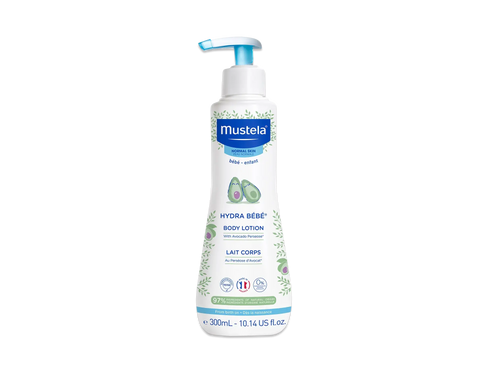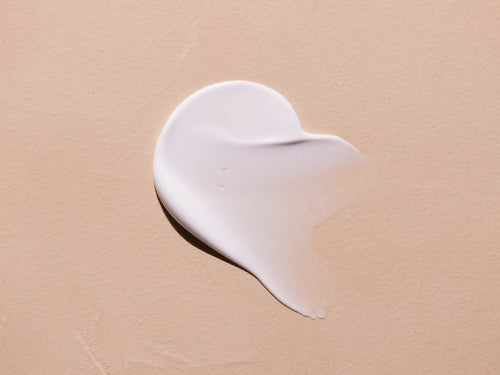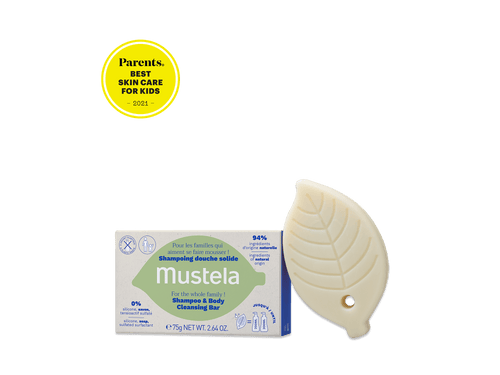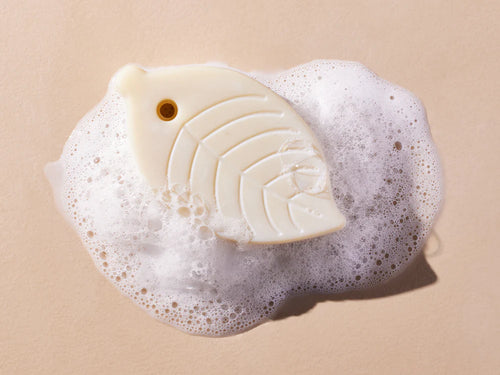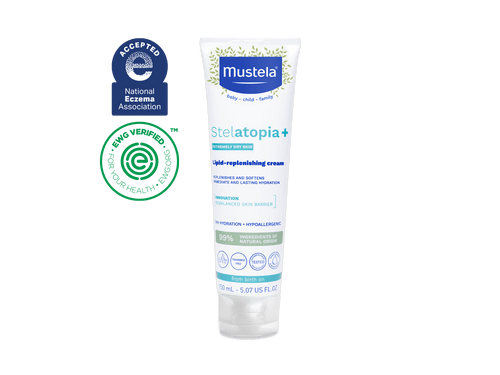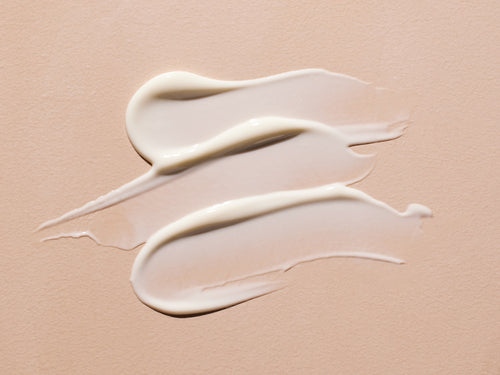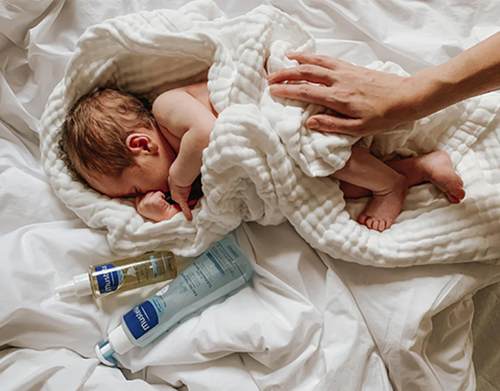Babies are especially curious and tend to touch things they’re not supposed to. This is why baby burns are sometimes inevitable. But knowing how to respond to any kind of burn accident can make a huge difference in the healing process.
Here you’ll find common causes and types of burns so you can identify your baby’s injury and react appropriately. Be prepared for any baby burn with this complete guide from Mustela!
Common Causes Of Baby Burns

Burns from hot water or hot liquid are the most common culprits of childhood accidents within the home and range anywhere from minor burns to more serious injuries.
Minor burns are not a cause for concern and can be treated at home. On the other hand, more serious burns require immediate medical attention.
From minor burns to serious ones, here are the most common causes of baby burns:
- Scalding (resulting from any hot liquid, such as bath water or coffee)
- Contact with flames (gas-burning stove, fireplace, or a house fire)
- Hot objects (electric stove or heating tools — curling iron, flat iron, or iron)
- Chemicals (swallowing a poison or chemicals spilled onto the skin, such as bleach)
- Electricity (sticking finger or object in an electrical outlet, biting on any electrical chord)
- Sunburn (leaving skin unprotected in the sun)
Burn Categories

First-degree, second-degree, and third-degree are the three categories of burns and are based upon severity. Quickly identifying the category of burn makes a difference in how you treat it.
Note: Always remove your child from the source of the burn immediately to reduce further skin damage.
First-Degree Burns
First-degree burns are the most common and minor of the three categories. These burns only affect the top layer of skin, but your baby’s skin may appear red and swollen, and your little one may experience minor pain.
Treatment
To treat first-degree burns, follow these steps:
- Remove your baby from the source of the burn.
- Remove any clothing from the affected area.
- Run cool water over the burn or hold a cold compress on it for three to five minutes.
- Apply Mustela’s Cicastela Moisture Recovery Cream to the affected area for relief. This multi-use must-have is your best line of defense against minor skin irritations! Apply the cream a few times per day as needed.
- Clean the affected area at least once per day with Mustela’s Gentle Soap With Cold Cream. Its gentle formula is perfect for nourishing your baby’s damaged skin.
- Cover your baby’s burn with gauze to prevent infection.
Second-Degree Burns
Second-degree burns are a little more serious than first-degree burns. These burns involve the outer and middle layers of skin, affecting deeper tissues and the dermis — the lower layer of skin. They produce blisters and cause severe pain and redness.
Treatment
Second- and third-degree burns are more severe, so it’s best to call for medical assistance if your child obtains either of these levels of burns. While waiting for help to arrive, follow these steps:
- Lay your baby down and elevate the burn area.
- Apply cool water over the affected area for three to five minutes.
- Cover the burn with a clean, dry cloth.
Third-Degree Burns
Third-degree burns are the most serious. These burns involve all layers of the skin and the underlying tissue. Your child may experience little to no pain, or the area may become numb due to nerve damage.
With third-degree burns, the skin will appear dry and look waxy, white, leathery, brown, or charred. Healing time with third-degree burns is pretty extensive and usually leads to skin grafts — surgery involving the transplantation of skin.
Treatment
Third-degree burns always require medical attention. For third-degree burns, follow the steps in the section above.
Specific Types Of Baby Burns
Electrical Burns

The majority of electrical burns happen when your baby:
- Touches an electrical outlet with their hand
- Places an object in an electrical outlet
- Chews on an electrical wire (Your baby is curious and everything tends to end up in their mouth, especially during the teething stage.)
Treatment
Make sure your child is not in direct contact with the electrical source before you comfort them because you could get shocked too. Take your child to the nearest emergency department or call 9-1-1 immediately for further evaluation.
Flame Burns
Flame burns are extremely severe and develop when the skin catches on fire.
Treatment
The course of treatment for flame burns involves the stop, drop, and roll method.
- Have your child roll on the ground to extinguish the flames.
- Immediately call 9-1-1.
- Remove any clothing from the burned area and wait for assistance.
Chemical Burns
Chemical burns occur when your child comes into direct contact — either through their skin or by ingestion — with a chemical or poison. If you think your child may have swallowed a chemical, call the Poison Control Center right away at 1-800-222-1222.
If you suspect it’s something severe, such as ingesting a watch battery, immediately go to your nearest emergency room.
Treatment
For a chemical burn to the skin, flush the area with running water for about five minutes or more. Cover the area with gauze for protection. Chemical burns to the mouth or eyes require immediate medical attention after flushing the area with water.
Note: If a product was ingested, save the bottle so you can read the ingredients list to the PCP or bring it with you to the emergency room for further investigation.
Preventing Baby Burns

Accidents happen, but you can take precautions to protect your baby by keeping your environment safe. Staying proactive minimizes the odds of your baby getting burned.
General Tips
Below are some general tips for your home to keep you and your baby safe.
- Keep matches, lighters, chemicals, and lit candles out of your child’s reach
- Cover all electrical outlets with child-safety covers
- Make sure you and older children in the house are mindful when using curling irons, flat irons, and irons
- Place smoke detectors on every floor of your home and in every bedroom
- Check smoke detectors once per month and change the batteries twice per year
- Replace old smoke detectors
- Don’t smoke inside the house
- Know the location of your fire extinguisher
- Cover your fireplace with a screen
Bathroom Tips
Bath time is fun and engaging for you and your baby, especially when you use Mustela’s Multi-Sensory Bubble Bath! But bath time can also be dangerous if you’re not careful.
Take precaution in the bathroom by:
- Changing the temperature setting on your water heater
- Testing bath water with your elbow before placing your baby in the bath
- Turning the cold water on first and turning it off last when running your baby’s bathwater
- Placing your baby away from the faucet so they’re less likely to play with the knobs
Kitchen Tips
The kitchen is the heart of your home. It’s where memories are made from baking, cooking, and gathering around the table. But the kitchen can also become a hazard when it comes to your baby and burns.
Take into account these prevention methods to ensure a safe cooking environment:
- Turn all pot handles to the back of the stove
- Block access to the stove
- Avoid using tablecloths (your baby can pull on the cloth...and then down come all the hot dishes)
- Keep hot drinks and food out of reach
- Never hold a baby while cooking
- Never warm a baby bottle in the microwave
Outdoor Tips
When playing outside in the heat and sun, remember this advice:
- Check playground equipment before use — swings and slides may be too hot for your child’s skin
- Apply sunscreen to your baby 20 to 30 minutes before going outside
- Reapply sunscreen as needed and every 90 minutes if playing in the water
- Keep newborns and young babies out of the sun if possible
- Bring a hat for your baby to protect their eyes and face from the sun
Keep Calm And Carry Cicastela Moisture Recovery Cream

As a parent, it’s easy to panic in any of the above situations. But, for the safety and protection of your child, you have to remain calm and remember the course of action for each type of burn.
The majority of baby burns can be treated with a little cream and a lot of love. But just in case, keep emergency numbers close by.
Mustela wants you to keep your little one as safe as possible by following the above prevention tips and by keeping Cicastela Moisture Recovery Cream on-hand for skin relief. So keep calm and carry Cicastela!



